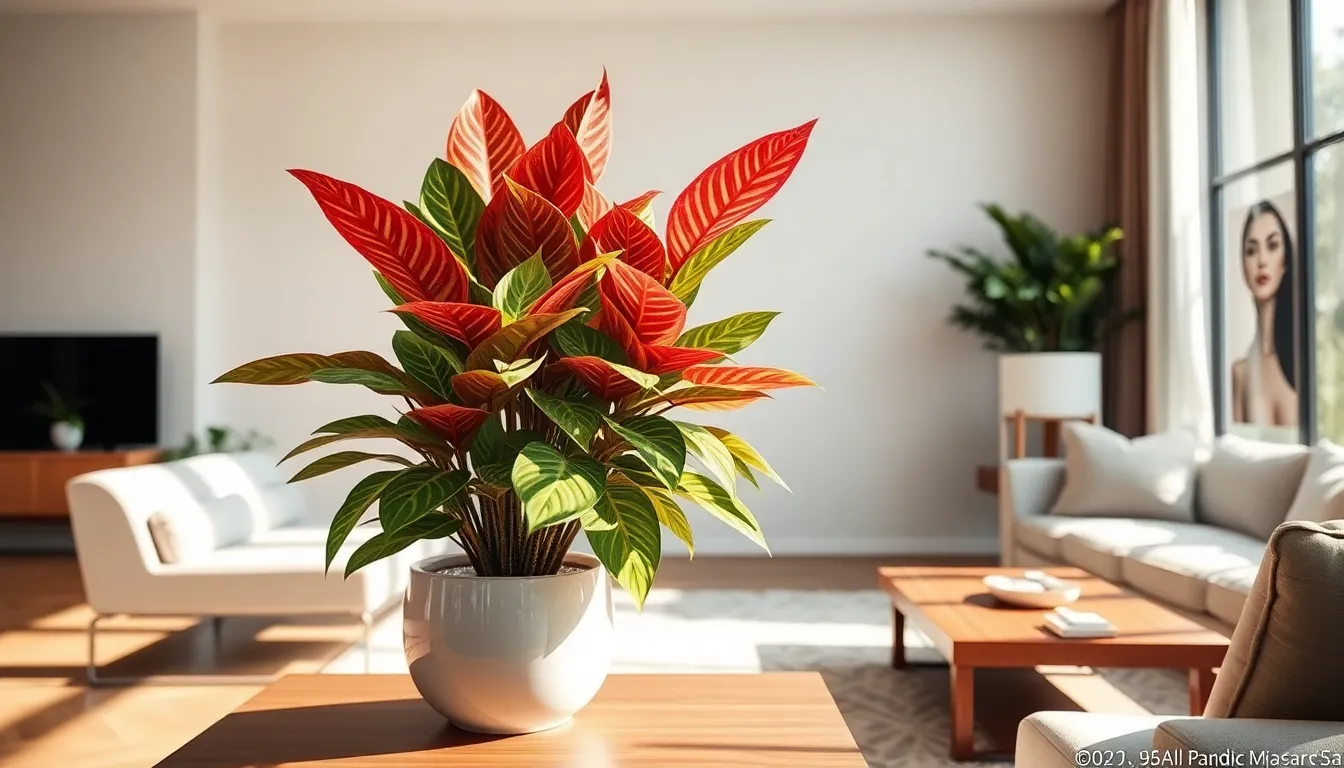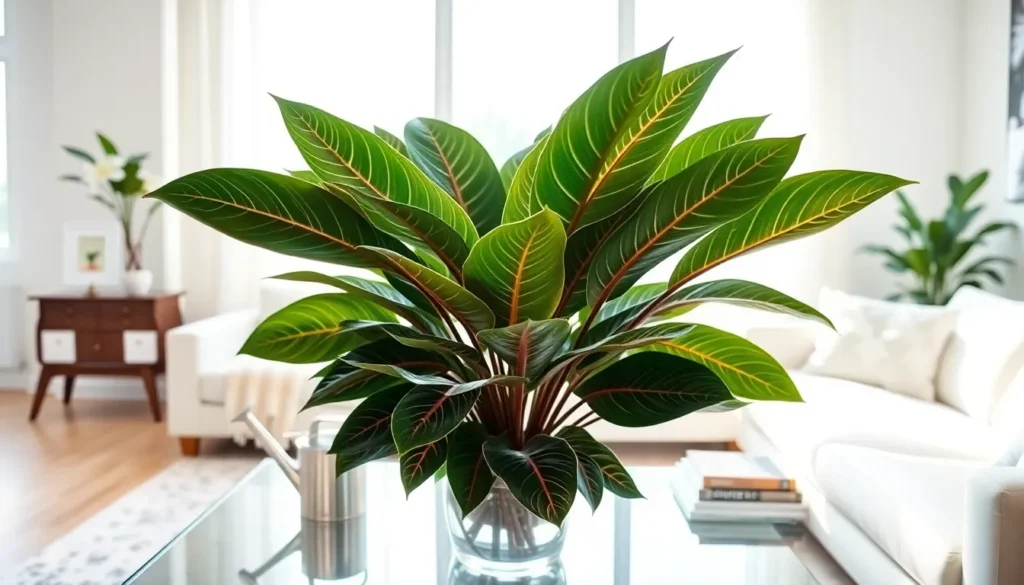Table of Contents
ToggleHave you heard about the Aglaonema? If not, brace yourself for a delightful journey into the world of this stunning houseplant. Often underrated, Aglaonema, affectionately called the Chinese Evergreen, is more than just a pretty leaf, it’s a testament to how much beauty nature can pack into one plant. Not only does it enhance indoor aesthetics, but it also promises an easy-going companionship with a few plant care secrets to unlock. So, prepare to be captivated by its lush foliage and learn why this beauty deserves a prime spot on your plant shelf.
Understanding Aglaonema: An Overview

Aglaonema is a genus of flowering plants in the family Araceae, native to tropical and subtropical regions of Asia. Renowned for its striking leaves, this plant exhibits a remarkable range of colors and patterns, making it a favorite among houseplant enthusiasts. Aglaonema thrives in low-light environments, which makes it a suitable choice for offices and homes alike. With thousands of species and hybrids, the diversity within this genus is astonishing. From jade green to fiery reds, each variety showcases a palette that can brighten any room.
The beauty of Aglaonema isn’t only skin-deep. It’s resilient and forgiving, which makes it ideal for beginners and seasoned plant parents alike. Its ability to adapt means it can endure neglect while still delivering gorgeous foliage that elevates interior spaces.
Aesthetic Appeal of Aglaonema
Types of Aglaonema: Varieties and Their Beauty
Aglaonema comes in a dazzling array of varieties, each boasting unique characteristics. The most popular types include:
- Aglaonema Silver Bay: This variety is loved for its dark green leaves, dotted with silvery accents. Its dramatic coloring can turn an ordinary corner into an eye-catching focal point.
- Aglaonema Red Siam: For those craving a pop of color, the Red Siam doesn’t disappoint with its vibrant red and green foliage. It practically exudes warmth.
- Aglaonema Pictum Tricolor: This one is a showstopper with its splashes of cream, green, and gray all on one leaf, making it a perfect conversation starter.
Each Aglaonema variety adds not just color but also distinct texture to décor. Their lush leaves and vibrant patterns create an inviting atmosphere, effortlessly enhancing both modern and traditional settings.
Caring for Your Aglaonema
Optimal Growing Conditions
To thrive, Aglaonema requires specific growing conditions.* While it can survive in low to medium light, it flourishes best in bright, indirect sunlight. Too much direct sun can scorch its leaves, potentially ruining that vibrant display.
Temperature is another crucial aspect. Aglaonema prefers warmth, ideally between 65°F and 80°F (18°C – 27°C). Consistency is vital, as they dislike drafts or sudden temperature changes. Watering should be done when the top inch of soil dries out, ensuring potent drainage to prevent root rot.
Common Issues and Solutions
Like any houseplant, Aglaonema can face its share of challenges, but troubleshooting is usually straightforward. Yellowing leaves often signify overwatering: reducing water frequency can set things right. Conversely, brown tips might indicate low humidity, suggesting a care routine including regular misting or a humidifier. Pest infestations, while rare, can occur, often brought in through new plants. Wiping down leaves with water can help keep unwanted critters at bay.
The Benefits of Aglaonema in Home Decor
Moisture and Air Quality Benefits
Besides its stunning appearance, Aglaonema is a champion at improving indoor air quality. NASA’s Clean Air Study highlighted its ability to remove toxins like formaldehyde and benzene, making homes healthier. Besides, Aglaonema contributes to a humid environment, beneficial for skin health and respiratory issues, especially in dry climates.
Symbolism and Cultural Significance
In various cultures, Aglaonema represents prosperity and good fortune. It’s often gifted during housewarming events or placed in offices to promote success. The symbolic aspect of Aglaonema, intertwined with its beauty, makes it not just a plant but a bearer of positive vibes and encouraging energy.







